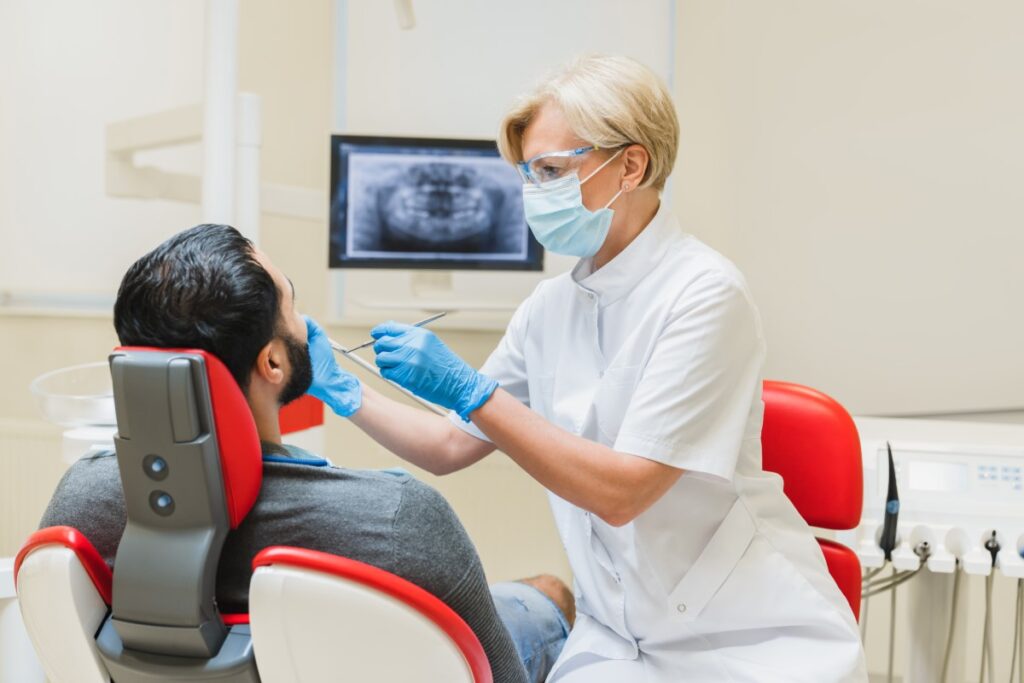Introduction
Temporomandibular Joint Disorder (TMJ) is a common condition that affects the temporomandibular joint, responsible for connecting the jawbone to the skull. It can lead to pain, discomfort, and limited jaw movement, significantly impacting a person’s quality of life. Fortunately, there are various effective treatment options available to manage TMJ and alleviate its symptoms. In this blog post, we will explore the causes, symptoms, diagnosis, and comprehensive treatment approaches for TMJ, providing valuable insights for those seeking relief from this condition.
Understanding TMJ: Causes and Symptoms
Causes of TMJ:
The exact cause of TMJ is often multifactorial and may vary from person to person. Some common contributing factors include:
- Jaw injuries or trauma
- Excessive teeth grinding or clenching (bruxism)
- Arthritis affecting the TMJ
- Misalignment of the jaw or teeth
- Stress and anxiety leading to jaw tension
- Structural abnormalities in the jaw joint
Symptoms of TMJ:
TMJ can manifest in a variety of ways, and its symptoms may vary in severity. Common signs of TMJ include:
- Jaw pain or tenderness
- Clicking or popping sounds when opening or closing the mouth
- Limited jaw movement or difficulty in fully opening the mouth
- Earaches or ringing in the ears (tinnitus)
- Headaches or facial pain
- Neck and shoulder pain
- Jaw locking in an open or closed position
Diagnosing TMJ
Since TMJ symptoms can mimic other conditions, an accurate diagnosis is essential for effective treatment. A healthcare professional, such as a dentist, oral surgeon, or an ear, nose, and throat (ENT) specialist, can perform a thorough evaluation. The diagnostic process may include:
Medical History and Physical Examination:
The healthcare provider will review the patient’s medical history and perform a physical examination of the jaw and facial area.
Imaging Tests:
X-rays, CT scans, or MRI scans may be used to obtain detailed images of the jaw joint, allowing the healthcare provider to identify any structural abnormalities or damage.
Bite Analysis:
An evaluation of the patient’s bite may be conducted to check for misalignments or occlusal issues that could contribute to TMJ symptoms.
Jaw Movement Assessment:
The range of motion and stability of the jaw will be assessed to identify any limitations or abnormalities.
TMJ Treatment Options

The treatment for TMJ is typically tailored to the individual’s specific needs and may involve a combination of therapies. Here are some common TMJ treatment options:
Self-Care and Lifestyle Modifications:
In mild cases of TMJ, self-care measures can be effective in managing symptoms. This may include:
- Applying moist heat or cold packs to the jaw area
- Eating soft foods and avoiding hard or chewy items
- Practicing stress-reduction techniques, such as meditation or yoga
- Avoiding habits like gum-chewing and nail-biting
Medications:
Pain relief medications, anti-inflammatories, and muscle relaxants may be prescribed to reduce pain and inflammation associated with TMJ.
Oral Appliances:
Oral splints or mouthguards are often recommended to prevent teeth grinding and clenching, providing relief to the jaw joint and surrounding muscles.
Physical Therapy:
Physical therapy exercises can help strengthen the jaw muscles, improve jaw mobility, and promote healing.
Bite Adjustment (Equilibration):
If an uneven bite is contributing to TMJ symptoms, a dentist may perform bite adjustment procedures to correct the alignment of the teeth.
Botox Injections:
In some cases, Botox injections may be used to relax the jaw muscles and reduce pain associated with TMJ.
Transcutaneous Electrical Nerve Stimulation (TENS):
TENS therapy involves the application of low-voltage electrical currents to the jaw area, providing pain relief and relaxing the jaw muscles.
Joint Injections:
For severe cases of TMJ with inflammation, corticosteroid injections may be administered directly into the jaw joint to reduce swelling and pain.
Surgical Interventions:
Surgery is typically considered when conservative treatments have not provided relief. Surgical options may include arthrocentesis, arthroscopy, or open joint surgery to address structural issues in the TMJ.
Complementary and Alternative Therapies

In addition to conventional treatments, some individuals may find relief from TMJ symptoms through complementary and alternative therapies. While these approaches may not be suitable for everyone, they can be considered under the guidance of a healthcare professional. Some complementary therapies for TMJ include:
Acupuncture:
Acupuncture involves the insertion of fine needles at specific points on the body to promote healing and alleviate pain.
Chiropractic Care:
Chiropractic adjustments may help realign the jaw and neck, potentially reducing TMJ-related discomfort.
Massage Therapy:
Targeted massage of the jaw and facial muscles can ease tension and improve blood circulation in the affected area.
Herbal Remedies:
Certain herbal supplements, such as valerian root and passionflower, may help with stress and muscle relaxation.
Lifestyle Changes for Managing TMJ
In addition to the treatments mentioned above, making certain lifestyle changes can aid in managing TMJ and reducing its impact on daily life:
Stress Management:
Stress can exacerbate TMJ symptoms, so adopting stress-reduction techniques like mindfulness, yoga, or exercise can be beneficial.
Avoiding Trigger Foods:
Some foods, like chewy or hard items, can strain the jaw, aggravating TMJ symptoms. Avoiding these trigger foods can alleviate discomfort.
Proper Posture:
Maintaining good posture, especially when sitting for prolonged periods, can reduce strain on the jaw and neck.
Jaw Exercises:
Performing gentle jaw exercises recommended by a healthcare professional can help improve jaw mobility and reduce muscle tension.
Long-Term Management and Prevention
Managing TMJ is often a long-term process, and individualized treatment plans should be tailored to each patient’s needs. Here are some strategies for long-term management and prevention of TMJ:
Regular Checkups:
Regular visits to a dentist or healthcare provider will ensure that the condition is monitored, and any changes are addressed promptly.
Stick to Treatment Plan:
Adhering to the recommended treatment plan, including medications, exercises, or oral appliances, is essential for managing TMJ effectively.
Dental Health:
Maintaining good oral hygiene and addressing dental issues promptly can prevent exacerbation of TMJ symptoms.
Lifestyle Awareness:
Being mindful of habits like teeth grinding, clenching, and poor posture can help prevent TMJ symptoms from worsening.
Conclusion
TMJ is a common condition that affects many individuals, causing pain and discomfort in the jaw and facial region. However, with the right approach to diagnosis and treatment, relief from TMJ symptoms is attainable. From self-care and lifestyle modifications to various medical and alternative therapies, there are multiple options available to manage TMJ effectively. By seeking professional guidance, individuals with TMJ can take steps toward better oral health, improved quality of life, and minimized impact on their daily activities.
If you have TMJ, don’t wait to get help from a professional for the best healing. At Roseburg PT, you can get personalized help and rehabilitation plans from skilled physical therapists. Set up your appointment today to get personalized help and take the first step toward healing.
To learn more about TMJ, check out the resources offered by Sutherlin Physical Therapy.



